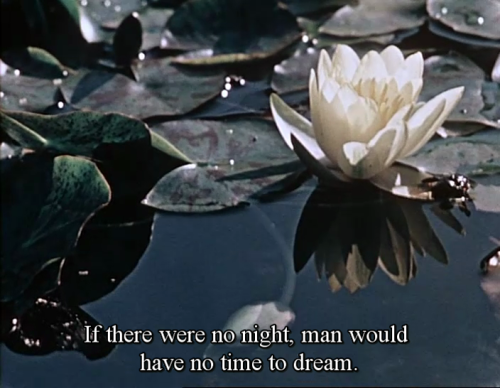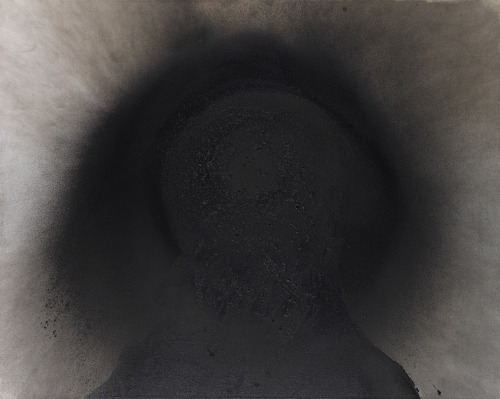Miklós Ligeti, Csók, 1902

Miklós Ligeti, Csók, 1902
More Posts from Raskopal and Others

Sapovnela (Otar Iosseliani, 1959)

The Black Panther’s Free Breakfast for Children Program is probably their best-known initiative, the press finding an intriguing story juxtaposing the Panther’s tough-guy-in-leather-jacket image with the act of serving small children plates of hot food. Importantly, it was mostly women who led these survival programmes, and women made up a majority of the Panther membership. They served in leadership roles from ‘Officer of the Day’ (essentially the office – and people – manager for each branch), to organising the many details of a location’s breakfast programme to initiating and leading food justice, healthcare and housing programmes within neighbourhoods.
So why does the image of the Panthers as a masculinist and violent organisation persist? The answer lies in part with media distortion, influenced both by the sexism and racism that misrepresented the Panthers. There was also a misinformation campaign by the FBI, led by J Edgar Hoover, waged against the increasingly popular Panthers, which had an enduring impact on how people saw them.

Jean Cocteau by Germaine Krull

Zaire, 1987
Chris Steele-Perkins

maja bajevic, en attendant, 2001

2021-11-05 16.01.47.png

Happy 88th, Otar Iosseliani.
With Michel Piccoli in 2012. Photo by Fabio Lovino.


Andrei Tarkovsky, “Nostalghia”. 1983.

Pamela Singh, Chipko Women Hug Tree to Protect it from Being Cut in Northern Uttar Pradesh, 1994

Otto Piene (German, 1928-2014), Black Yang, 1985. Oil, traces of fire and smoke on canvas, 80 x 100 cm.
-
 maroonafternoon reblogged this · 4 weeks ago
maroonafternoon reblogged this · 4 weeks ago -
 maroonafternoon liked this · 4 weeks ago
maroonafternoon liked this · 4 weeks ago -
 woven-birds reblogged this · 4 weeks ago
woven-birds reblogged this · 4 weeks ago -
 minasofiya reblogged this · 1 month ago
minasofiya reblogged this · 1 month ago -
 nola-aiwe reblogged this · 1 month ago
nola-aiwe reblogged this · 1 month ago -
 werewolfenthusiast liked this · 1 month ago
werewolfenthusiast liked this · 1 month ago -
 all-these-colors-in-me liked this · 1 month ago
all-these-colors-in-me liked this · 1 month ago -
 la-devastante-verita reblogged this · 1 month ago
la-devastante-verita reblogged this · 1 month ago -
 fxreflyes reblogged this · 1 month ago
fxreflyes reblogged this · 1 month ago -
 aealoarcturus reblogged this · 1 month ago
aealoarcturus reblogged this · 1 month ago -
 breathless-art liked this · 1 month ago
breathless-art liked this · 1 month ago -
 elgatorojodekazakhstan liked this · 1 month ago
elgatorojodekazakhstan liked this · 1 month ago -
 mindwalkrhyme reblogged this · 1 month ago
mindwalkrhyme reblogged this · 1 month ago -
 frau-schneider liked this · 1 month ago
frau-schneider liked this · 1 month ago -
 itsyasuds reblogged this · 1 month ago
itsyasuds reblogged this · 1 month ago -
 crzspnl reblogged this · 1 month ago
crzspnl reblogged this · 1 month ago -
 crzspnl liked this · 1 month ago
crzspnl liked this · 1 month ago -
 juststuffilikeahhh reblogged this · 1 month ago
juststuffilikeahhh reblogged this · 1 month ago -
 binocularsyeah liked this · 1 month ago
binocularsyeah liked this · 1 month ago -
 woven-birds liked this · 1 month ago
woven-birds liked this · 1 month ago -
 wutheringb liked this · 1 month ago
wutheringb liked this · 1 month ago -
 111wszystkichswietych liked this · 1 month ago
111wszystkichswietych liked this · 1 month ago -
 meenent liked this · 1 month ago
meenent liked this · 1 month ago -
 its-hercollectionkoala liked this · 1 month ago
its-hercollectionkoala liked this · 1 month ago -
 yesistolethisurl reblogged this · 1 month ago
yesistolethisurl reblogged this · 1 month ago -
 yesistolethisurl liked this · 1 month ago
yesistolethisurl liked this · 1 month ago -
 erodingsinner reblogged this · 1 month ago
erodingsinner reblogged this · 1 month ago -
 poetbutterkristenmitchell liked this · 1 month ago
poetbutterkristenmitchell liked this · 1 month ago -
 comoquisieraunapilsen reblogged this · 1 month ago
comoquisieraunapilsen reblogged this · 1 month ago -
 palabrasdesgastadas reblogged this · 1 month ago
palabrasdesgastadas reblogged this · 1 month ago -
 irlpxnsy reblogged this · 1 month ago
irlpxnsy reblogged this · 1 month ago -
 irlpxnsy liked this · 1 month ago
irlpxnsy liked this · 1 month ago -
 lokebrenna reblogged this · 1 month ago
lokebrenna reblogged this · 1 month ago -
 general-grey reblogged this · 1 month ago
general-grey reblogged this · 1 month ago -
 trsevenn liked this · 1 month ago
trsevenn liked this · 1 month ago -
 kandyrezi liked this · 1 month ago
kandyrezi liked this · 1 month ago -
 incubus3 reblogged this · 1 month ago
incubus3 reblogged this · 1 month ago -
 caballero-ladron reblogged this · 1 month ago
caballero-ladron reblogged this · 1 month ago -
 akasztofavirag-por reblogged this · 1 month ago
akasztofavirag-por reblogged this · 1 month ago -
 akasztofavirag-por liked this · 1 month ago
akasztofavirag-por liked this · 1 month ago -
 himitsuuuy liked this · 1 month ago
himitsuuuy liked this · 1 month ago -
 bat77q liked this · 1 month ago
bat77q liked this · 1 month ago -
 sho-u-g reblogged this · 1 month ago
sho-u-g reblogged this · 1 month ago -
 sho-u-g liked this · 1 month ago
sho-u-g liked this · 1 month ago -
 tacitosplendore liked this · 1 month ago
tacitosplendore liked this · 1 month ago -
 femmeharel reblogged this · 1 month ago
femmeharel reblogged this · 1 month ago -
 resalination liked this · 1 month ago
resalination liked this · 1 month ago -
 kamogryadeshi liked this · 1 month ago
kamogryadeshi liked this · 1 month ago
